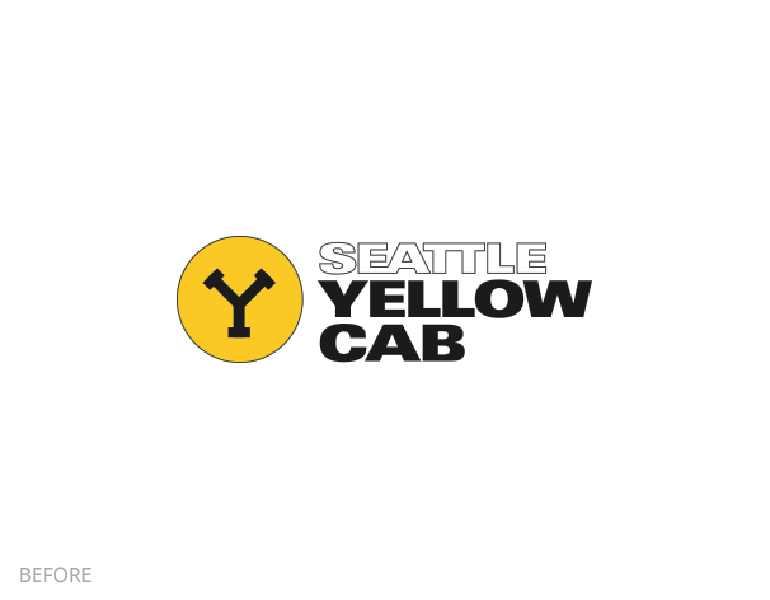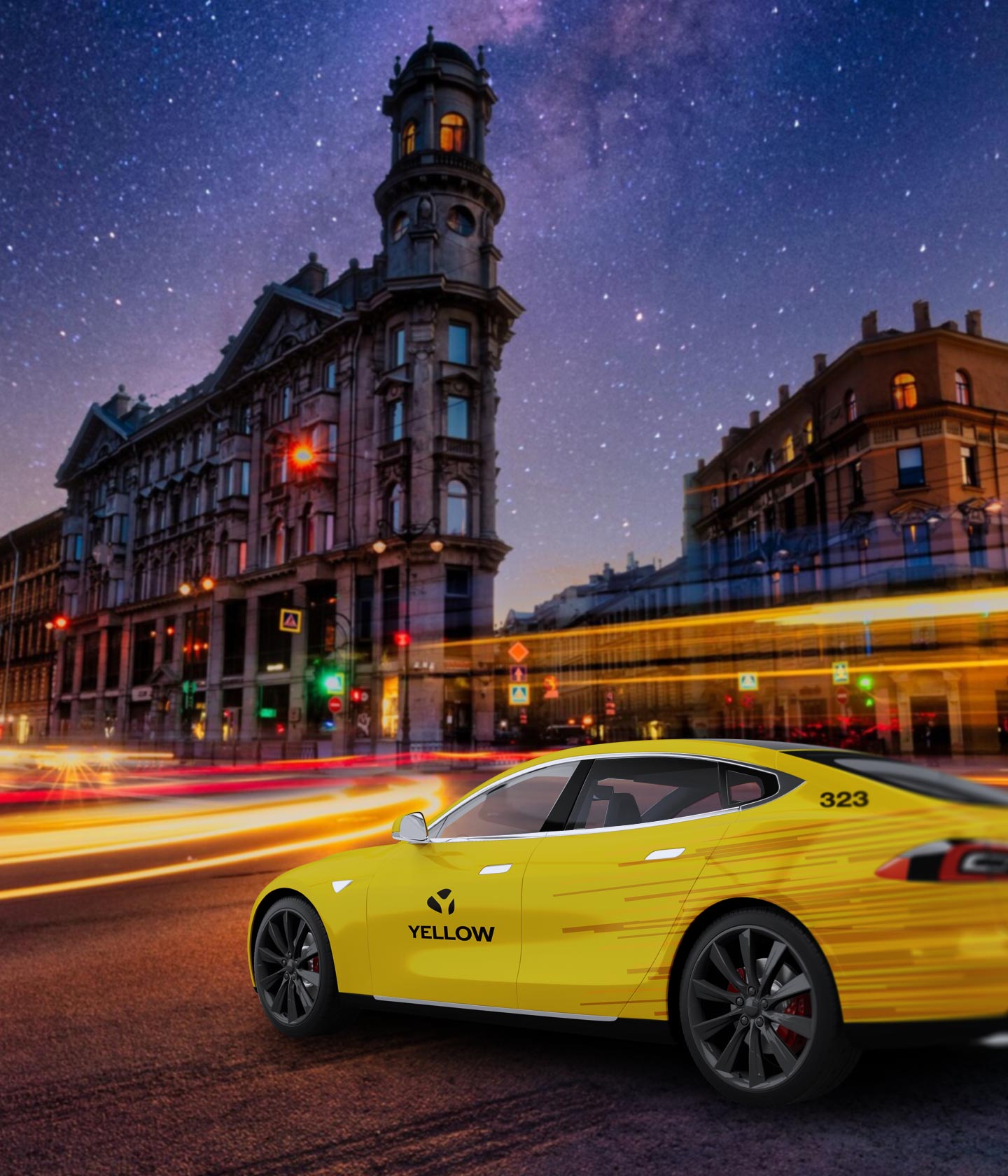
Hello Yellow
bringing a legacy transportation provider into the 21st Century

Surge protection
The first 20 years of the 21st Century have brought about a revolution in on-demand transportation. How does a decades-old stalwart hope to compete?
In 2014, Seattle Yellow Cab was bleeding market share to ride-hailing apps Uber and Lyft, and had been resorting to lobbying for long-shot protectionist public policy to try to fend them off. That year, they asked me to propose an 18-month strategy to reposition the company in the eyes of consumers. They needed to build support for the public policy proposals and stem falling passenger volume.
For my proposal, I posited that repositioning Yellow Cab in the market required two things: brand rehabilitation (dealing with negative perceptions and past experiences), and identifying and drawing attention to the benefits of using taxicabs over services, known in the industry as "transportation network companies" or TNCs, like Uber and Lyft.
I took a three-pronged approach: a modernized and refined brand execution that would draw attention to and recast consumer sentiment about a new era in Yellow Cab's operations; a holistic marketing approach to spell out the differentiated benefits of taking a cab; and recommedning customer experience improvements in both the digital and physical parts of the taxicab customer journey.



Before Seattle Yellow Cab could differentiate from the global TNCs, I knew they had to re-establish themselves with customers.
For this top-of-funnel idea, I focused on brand representation through a new brand mark (see before and after), and a more friendly positioning statement: Hello Yellow.
The icon symbolized forward motion and customer choice. It had to maintain continuity with hundreds of existing yellow cars. The softer shapes, and shorter name — now just Yellow — gave the service a more human personality and modern touch, in line with core values we knew were drawing customers to TNCs.
Brand rehabilitation required building more positive associations with the Yellow brand than existed previously. Riders associated Seattle Yellow Cab with dirty, high-odometer, retired police cars; poor customer service; and a clunky telephone-based dispatch system oddly still being prominently touted on the fleet itself.
As one part of a multipart plan, I pitched a practical activation: leasing six to ten of the then-coolest cars on the road, the Tesla Model S, and wrapping them in updated Yellow branding.
I proposed dispatching them to busy nightlife neighborhoods around the city as part of the regular fleet with specially selected and trained drivers. On any given evening, a Yellow customer could find themselves randomly assigned to a luxe Tesla trip to their destination. Attaching an enhanced experience to the brand, with the added benefit of featuring Yellow's new brand kit prominently all over the city on the car with the most cache, would both drive tactical decisionmaking ("Let's try Yellow — maybe we'll get the Tesla!") and long-term brand building among the public ("Wow, was that a Model S? Yellow's really upped their game!").


Drawing attention to the differences with TNCs called for additional messaging.
For the proposal, which was prepared without a budget for research, I focused on two key differentiators that my instinct told me consumers were most likely to care about: the lack of demand-driven pricing (aka "surge pricing"), and an easier and faster experience to and from SeaTac International Airport than any other provider.
Due to its then-exclusive concession agreement with the Port of Seattle, Yellow had the ability to forward deploy large numbers of unallocated cars to the airport. Customers could get into the next available car immediately, unlike with TNCs which required waiting for a car to dispatch from a remote holding lot.
For this customer context, I wrote, designed, and pitched treatments for display ads specific to the airport under the concept "Ready for Departure," highlighting through both text and imagery the tightly integrated, easy-to-use passenger experience between Yellow and the region's aviation hub.
To put it plainly, the existing mobile app was a clunker. The UI was dated and amateurish. The experience relied on duplicating how a telephone dispatcher would have summoned a car for a user in the previous era. It had been invented by an industry not used to re-evaluating how it does business, and it showed.
I proposed a revised approach that took liberally from what was successful about TNC apps and enhanced it for the unique use cases — such as the legal requirement taxi companies must comply with to supply wheelchair accessible vehicles.
In my proposal, I said wanted to produce an app that users could use successfully "while they're drunk." It believed it must be dead simple to use, even if a user is summoning a car after a night out drinking with friends.
I defined a revised visual approach, and identified three immediate product improvements we could make to reduce friction in app-based dispatches: type-ahead address searches; an easy affordance for selecting the correct vehicle type; and a unique "hailer" to help ensure customers got into the right cab in crowded pickup locations. To produce them quickly and inexpensively for the proposal, I designed the flow in Illustrator and animated in Keynote for presentation to SYC's leadership.
Ride hailing app demo cut down from a longer Keynote presentation prepared for the proposal.
Ultimately...
The pitch meeting with Seattle Yellow Cab's general manager and several senior staffers went well, but the client decided not to proceed in taking the proposal to contract due to previously uncommunicated budget constraints.
Fascinatingly, several weeks later, the proposed "Hello Yellow" slogan began appearing next to screenshots of their existing mobile app on big bumper stickers on Yellow Cab taxis around the city.
Selected Works
This website ©2025 Adam Kuglin.
Trademarks are property of their respective owners.